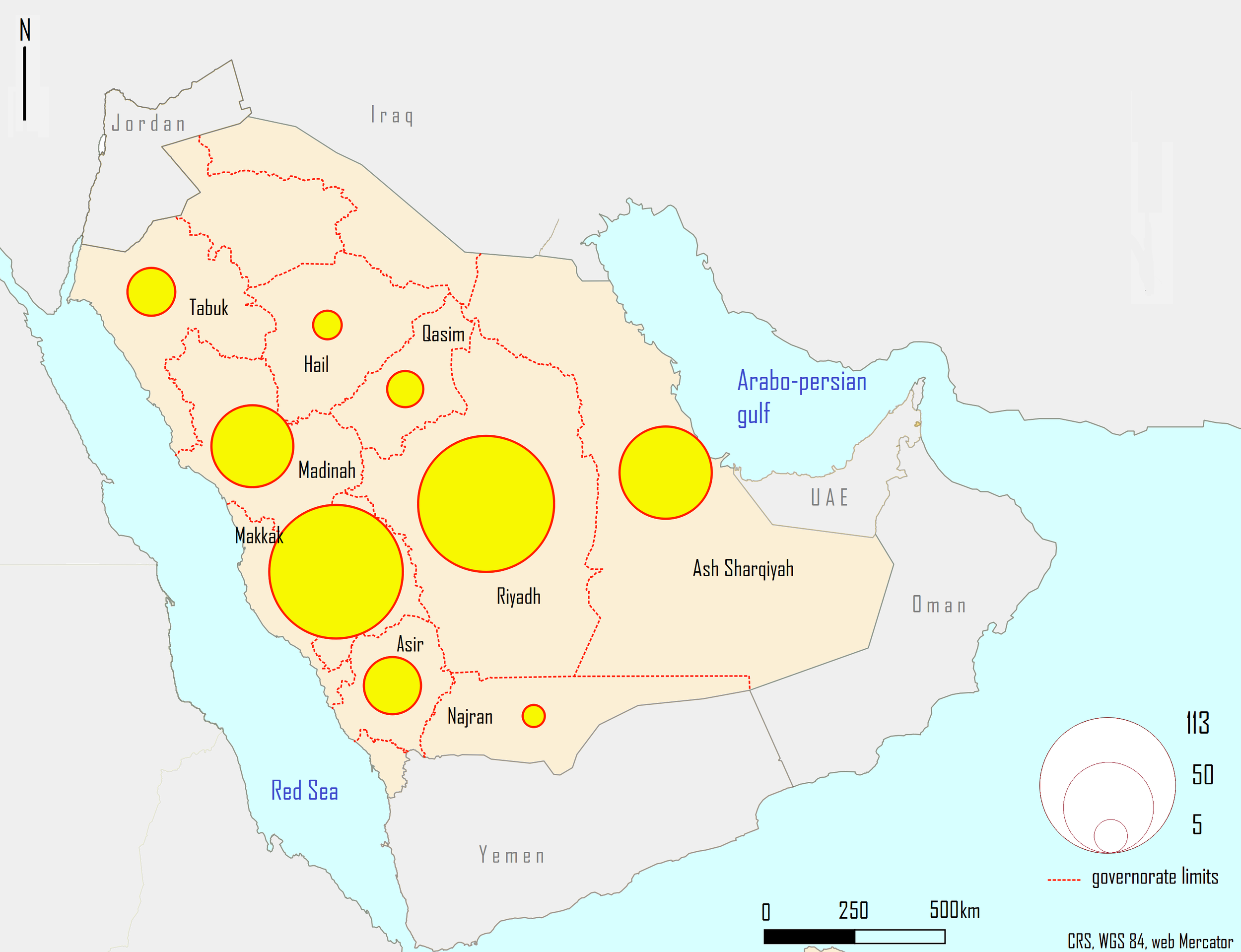Saudi Arabia
With a land area of about 2.15 million km—the second largest in the Arab world—and with a coastline that stretches for about 1,840 km, the Kingdom of Saudi Arabia is endowed with a variety of climate zones and natural ecosystems ranging from arid deserts to forests.[1] The revenues generated from oil exports since the discovery of deposits in the 1930s have contributed significantly to Saudi Arabia’s economic growth and development.[2] It has turned the Kingdom within a few decades into one of the wealthiest nations, in per capita terms, in the world. Simultaneously, the population of Saudi Arabia increased from about 19 million in 1990 to over 34 million in 2021.[3]
Characterized by low rainfall and high evaporation rates, Saudi Arabia is one of the driest areas in the world.[4] There are no surface water resources like rivers or lakes, and most of the Kingdom’s water is sourced from its limited underground reserves with an increasing share of the water supply coming from desalination.[5] Saudi Arabia is currently under the water poverty threshold of 1,000m.[6] Renewable freshwater per person per year currently stands at 103m on average.[7] Arable land in the Kingdom accounts for only 1.7% (3.42 hectares) of total land, of which only 0.6% (1.81 hectares) is used for agriculture.[8] The kingdom sources nearly 70% of its food from imports.[9])
Relative Survey Population Sizes for the Perceptions Survey. Map created by Moustapha Nour-Ayeh.
A survey consisting of 112 questions grouped under 24 categories was used to measure youth perception of climate change in Saudi Arabia. The survey targets youth in the age bracket of 18 – 35 years old to better represent the highest fraction of the population in this study area and give a comprehensive understanding of youth perception. To ensure that we have a representative sample, the survey targets a minimum of 400 respondents per country. It draws from different categories of affiliations: students and non-students, and working or non-working groups. The questionnaire was pilot tested in March 2022, in Bahrain, Kuwait, Oman and Saudi Arabia, with seven people, to gain feedback for further improvement of the questionnaire.
The survey in Saudi Arabia was conducted with the assistance of YouGov, which has access to youth aged 18-35 in different parts of the country.
[1] This coastline number specifically refers to the coastline on the Red Sea. Mohamed E. Hereher, “Vulnerability Assessment of the Saudi Arabian Red Sea Coast to Climate Change,” Environmental Earth Sciences 75, no. 1 (December 19, 2015): 30, https://doi.org/10.1007/s12665-015-4835-3.
[2] Khalid A. Alkhathlan, “Contribution of Oil in Economic Growth of Saudi Arabia,” Applied Economics Letters 20, no. 4 (March 1, 2013): 343–48, https://doi.org/10.1080/13504851.2012.703310.
[3] “Population Estimates” (Riyadh, Saudi Arabia: General Authority for Statistics, 2023), https://www.stats.gov.sa/en/43.
[4] United Nations Economic and Social Commission for Western Asia (ESCWA), “Regional Climate Modelling Outputs for Saudi Arabia: Key Findings,” RICCAR technical report (Beirut, Lebanon: Regional Initiative for the Assessment of Climate Change Impacts on Water Resources and Socio-Economic Vulnerability in the Arab Region (RICCAR), 2023), https://www.unescwa.org/sites/default/files/pubs/pdf/regional-climate-modelling-outputs-saudi-arabia-english.pdf.
[5] Mirza Barjees Baig et al., “Water Resources in the Kingdom of Saudi Arabia: Challenges and Strategies for Improvement,” in Water Policies in MENA Countries, ed. Slim Zekri (Cham: Springer International Publishing, 2020), 135–60, https://doi.org/10.1007/978-3-030-29274-4_7.
[6] Erica DeNicola et al., “Climate Change and Water Scarcity: The Case of Saudi Arabia,” Annals of Global Health, Climate Change, Global Health and Human Rights, 81, no. 3 (May 1, 2015): 342–53, https://doi.org/10.1016/j.aogh.2015.08.005.
[7] “Renewable Internal Freshwater Resources per Capita (Cubic Meters) - Saudi Arabia” (Food and Agriculture Organization, AQUASTAT data, 2020), https://data.worldbank.org/indicator/ER.H2O.INTR.PC?locations=SA.
[8] “Saudi Arabia,” in The World Factbook (Central Intelligence Agency, March 13, 2024), https://www.cia.gov/the-world-factbook/countries/saudi-arabia/.
[9] Hussein Mousa, “Retail Foods: Saudi Arabia,” OAA Riyadh Reports (Riyadh, Saudi Arabia: United States Department of Agriculture: Foreign Agricultural Service, June 27, 2023

